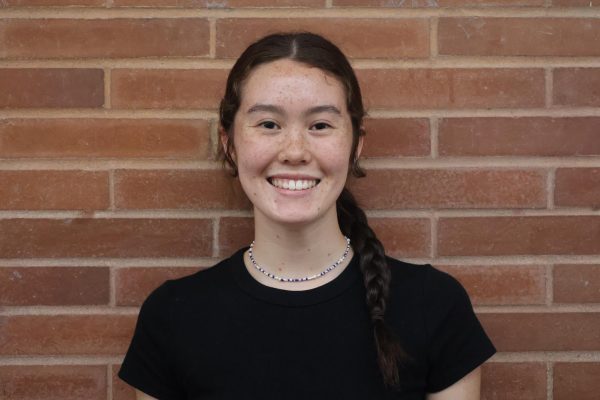Beginning in August, Ida B. Wells High School became a phone-free campus through the Yondr Phone-Free Schools Program. Before entering school, students must lock all their personal electronic devices (PEDs)—including cellphones, wireless earbuds and smartwatches—in their school-administered Yondr pouch.
IBW became a phone-free campus in accordance with Oregon Gov. Tina Kotek’s Executive Order 25-09, which prohibits cellphone use in schools, and the district’s new technology policy that prohibits the use of PEDs during the school day. Both policies cite bettering student mental health and engagement as the reasons behind stopping cellphone use in the classroom.
While the majority of IBW students understand why cellphones are prohibited in school, most don’t see eye-to-eye with the administration’s decision to use Yondr pouches as the vehicle to achieve a phone-free school day.
IBW senior Emmett Keeling says the Yondr pouches are inconvenient. “It’s a little bit unnecessary for me, for us, to not have our phones at lunch,” he says. “It creates a lot of traffic [getting into and out] of school. There’s always this giant mess of people outside the doors trying to unlock and get in.”
There are a few that support the Yondr pouches, though. For junior Anaya Miranda-Blank, she says she and her friends are reaping the benefits of a phone-free school. “I’m paying more attention in class and I’m not using my phone all the time,” she says. “I know a few of [my friends] have said it’s effective just because they are focusing a lot more in class.”
Sarah Bloom, a senior, says she is unsatisfied with the implementation of IBW’s phone-free campus. “I understand [what Yondr pouches] are used for, and I agree that phones are a decently big problem in schools, but I feel like there are so many better ways to go about the phone issue that don’t involve locking up my phone all day,” she says.
Bloom has concerns about her safety with the Yondr pouches. “[My phone is] realistically my only form of contact with my parents, my entire family, [during] emergencies,” she says. “What am I going to do if my phone’s locked up in a pouch that I can only unlock when I’m waiting in a line of people?”
Parents who opposed the Yondr pouches shared the same concern as Bloom. “My first reaction to the Yondr pouches was concern because my student would not be able to access her phone at all during the day, even in the event of an emergency,” says Janice Miller, an IBW parent.
When Miller got her child a phone, it was because her daughter had experienced a lockdown with an active shooter. “I wasn’t going to put myself in a situation where I couldn’t comfort my child,” says Miller.
IBW Principal Ayesha Coning understands that there are parents with concerns like Miller. “We make time to really have an individual, in-depth conversation if they reach out,” says Coning.
Miller expressed her concerns to the administration about the Yondr pouches and her student’s safety. She says she left that conversation feeling heard and understood. “We came up with a solution that works for everybody,” says Miller.
“Largely, however, parents support the use of Yondr pouches to make IBW a phone-free campus,” says Scott Burns, a vice principal at IBW.
After the governor’s executive order was released last July, each school administration in Oregon needed to decide how to implement the ban on phones during school hours.
In conversations Coning had with students last spring, she says students showed a “surprising amount” of support for a phone-free campus, but not for the use of Yondr pouches.
Coning and other administrators were ultimately convinced to use Yondr pouches due to support from the teacher and parents, and the success of the Yondr pilot programs at Cleveland High School and Grant High School. Coning also says purchasing Yondr pouches worked within the school’s budget from the district.
Staff acknowledge that this is a big change. “It was a hard pill to swallow, especially for the kids,” says Katie Parnell, Lead Campus Security Associate (CSA). Last year, students had access to their phones during the school day, as cellphone use was banned in the classroom but not at lunch.
Both Keeling and Bloom report that many students are reluctant to the Yondr pouches and find ways to work around them. “I think it’s really easy to get around the pouch,” says Keeling. “If you don’t really want to [use it], you can put [in] a fake, like a brick, [in the Yondr pouch] or just put your phone in your car.”
“I don’t know a single person who actually likes them,” says Bloom. “It’s just something that people are trying to figure out how to work around, for the most part. Especially during lunch, everybody wants their phone because, as seniors [at least], everybody’s off campus.”
Coning understands that this happens. “Ultimately, we just want to help students not have their personal electronic devices out during class. You know, we have a bunch of seniors who are like, ‘I left it at home,’ [or], ‘I left it in my car,’” she says. “As long as it’s not in school, and it’s not out, that’s okay. That’s the bottom line.”
Despite this, adults in the school have noticed a positive shift in the student body overall. Burns says he has seen an increase in students with their heads up, talking with each other. Parnell noticed this too. “It’s nice to see kids finally interacting with each other, instead of being glued to their phones all the time,” she says.
Jeremy Shetler, a sophomore math teacher, has seen encouraging results in his classroom from the Yondr pouches. He says some of his students are “flying through” the material, and there is increased curiosity and imagination in his classroom.
Burns says teachers have “overwhelming support” for the Yondr pouches. “I’m hearing from staff that they’re really enjoying seeing students interact and collaborate and talk with each other, both socially and academically,” says Burns. “They’re seeing way more engagement and in classes because the phone is not a distraction.”
Teachers also don’t interact with the implementation of the phone-free campus, a difference from last school year, when teachers would confiscate students’ personal devices. “We’ve really tried to do that as an administrative team,” says Burns. “[We’ve] let the teacher[s] know, ‘Hey, if there’s an electronic device out, you just contact us and we’ll come help.’”
Parnell and her team of CSAs play a supporting role to the administration in creating a phone-free campus now. “We help in the process of implementing the Yondr pouches, but at the end of the day, it’s up to the administrator,” says Parnell. “If we [CSAs] see a phone, we don’t take it. I take the kid to [an] administrator or take them to the office.”
There is some doubt from adults in the community about the Yondr pouches being the best answer, too. Miller says she heard all the ways students could avoid using Yondr pouches when it was first announced that they would be used at IBW. “We’ve created a world where our kids exist on their phones digitally,” says Miller. “We threw [students] into that world in Covid, and now we’re saying, now you can’t have it sometimes.”
“I don’t know if that’s the solution,” she says. “I think locking up the phones is a solution that works for teachers and for administration if they can keep the phones locked up, but if they don’t include kids in the solution, the kids are just gonna work on finding a way around it.”
Shetler is still unsure whether Yondr pouches are the best direction to take. He says that the last few years have been tough in managing students’ technology use, especially after relying on it during the pandemic.
“For our Yondr pouches to come in this year, I think it is a good thing,” he says. “I don’t know if it’s the best thing or if it’s the final solution, but in terms of the governor signing off that cell phones would be prohibited items in school, I am one hundred percent behind that.”
Bloom suggests a technology policy where teachers take attendance according to which students’ phones are in a phone caddy as a better solution. She says this policy was enforced in her math class last school year. “There was never an issue in his [her teacher’s] class,” says Bloom. “Then I got my phone back [at the end of class], and it was always there. It was always readily accessible if I needed it.”
There are exceptions to using the Yondr pouches. Most commonly, exceptions are granted to students with medical needs, disabilities, a 504 plan or an Individual Education Plan.
Even so, administrators worked with mental health providers and students asking for exceptions due to mental health needs to consider other coping mechanisms that don’t involve a personal device.
“We’re asking people to really think about, ‘What else can you do to reduce your anxiety,’ because now you’re part of a learning community where we are not accessing personal electronic devices,” says Coning. “In most cases, students were able to adjust.” She says IBW has fewer than 20 exceptions to using a locking Yondr pouch.
Jessie Ginsberg is an IBW senior with a 504 plan allowing him to listen to music during non-instructional time due to diagnoses of ADHD and anxiety. He says his 504 plan was deemed “not valid” by administrators for an exception because he did not have a “medical reason” for needing one.
“Their suggestion was that I buy two sets of headphones. I buy a new set of headphones that connect to my Chromebook, which would take up most of my desk to listen to music, and then I buy another set of headphones, which are noise canceling, for the hallway,” says Ginsberg. “It’s the quiet noises that bother me, so noise-canceling headphones kind of do nothing.”
With the admin’s proposal unable to work for Ginsberg, and never granted an exception, he had to reach out to his teachers individually to devise a plan that worked for their classroom and Ginsberg’s 504 plan.
IBW, Cleveland High School, Grant High School, Franklin High School and Jefferson High School are six of nine Portland Public high schools using Yondr pouches this school year.









